For artists, the choice of color is essential in creating a unique and compelling work of art. Every color has its unique characteristics that can evoke different emotions and moods. Cadmium Lemon has found its place in the artist’s palette is versatile and vibrant. In this article, we will explore this color’s use and significance in the art world, providing insights into why it continues to be a popular choice among artists.
Cadmium Lemon by different brands
Find 8 manufacturer(s) of watercolors below. We’ve also compiled a list of our favorite art supplies here.
Cadmium Lemon – Winsor & Newton
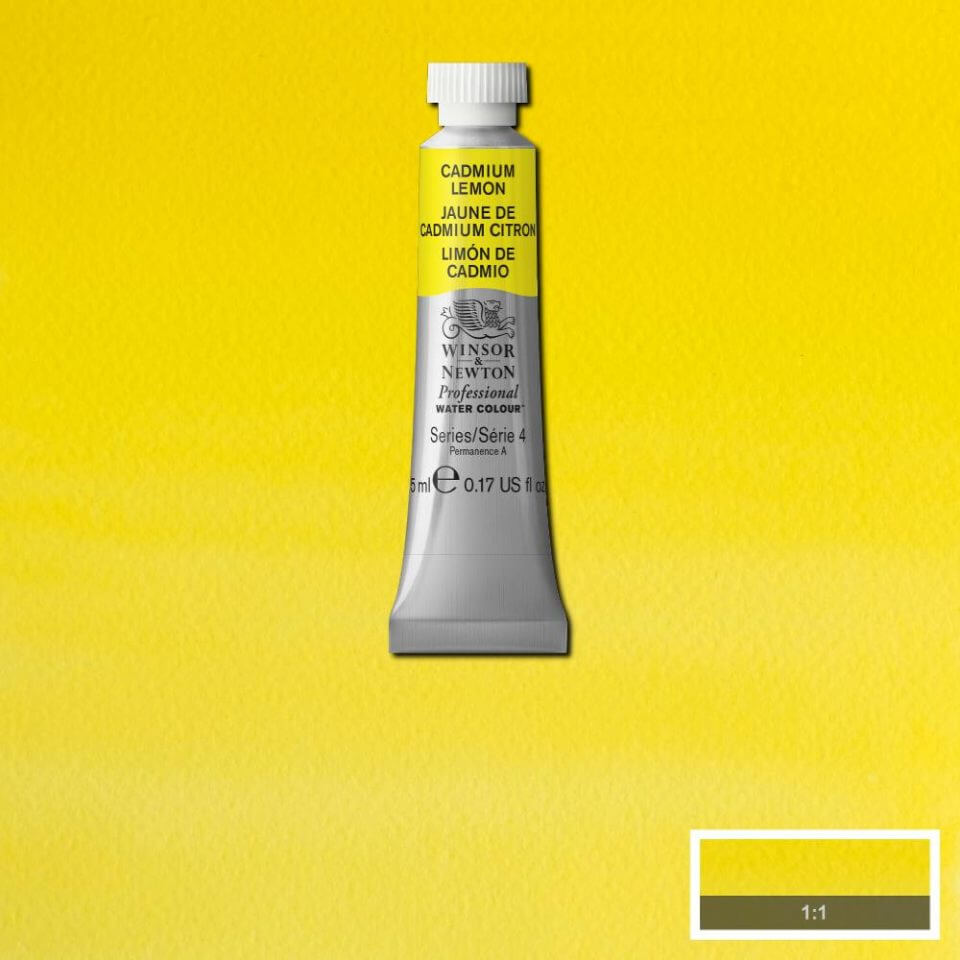
A bright lemon yellow with green undertones. Cadmium was discovered in 1817. Its stable opaque colours have made it a popular pigment ever since. Please note product packaging may vary from image.
| Color No.: 86 | Lightfastness:I – Excellent | Opacity:Opaque |
| Staining: | Granulation: | Sizes: 5ml tubes; 14ml tubes; Half Pans |
Cadmium Yellow Lemon – Rembrandt

| Color No.: 207 | Lightfastness: | Opacity:Semi-transparent |
| Staining: | Granulation: | Sizes: Tube 10 ml |
Cadmium-Free Lemon – Winsor & Newton

A bright lemon yellow with green undertones, alternative to Cadmium Lemon. Please note product packaging may vary from image.
| Color No.: 898 | Lightfastness:I – Excellent | Opacity:Opaque |
| Staining: | Granulation: | Sizes: 5ml tubes; 14ml tubes; Half Pans |
Lemon Yellow (Nickel Titanate) – Winsor & Newton

Lemon Yellow is a clear bright yellow colour. It is part of the Hansa pigments which were discovered in the early 1900s in Germany by the Hoechst company.
| Color No.: 347 | Lightfastness:I – Excellent | Opacity:Opaque |
| Staining: | Granulation: | Sizes: 5ml tubes; 14ml tubes; Half Pans |
Lemon Yellow Deep – Winsor & Newton
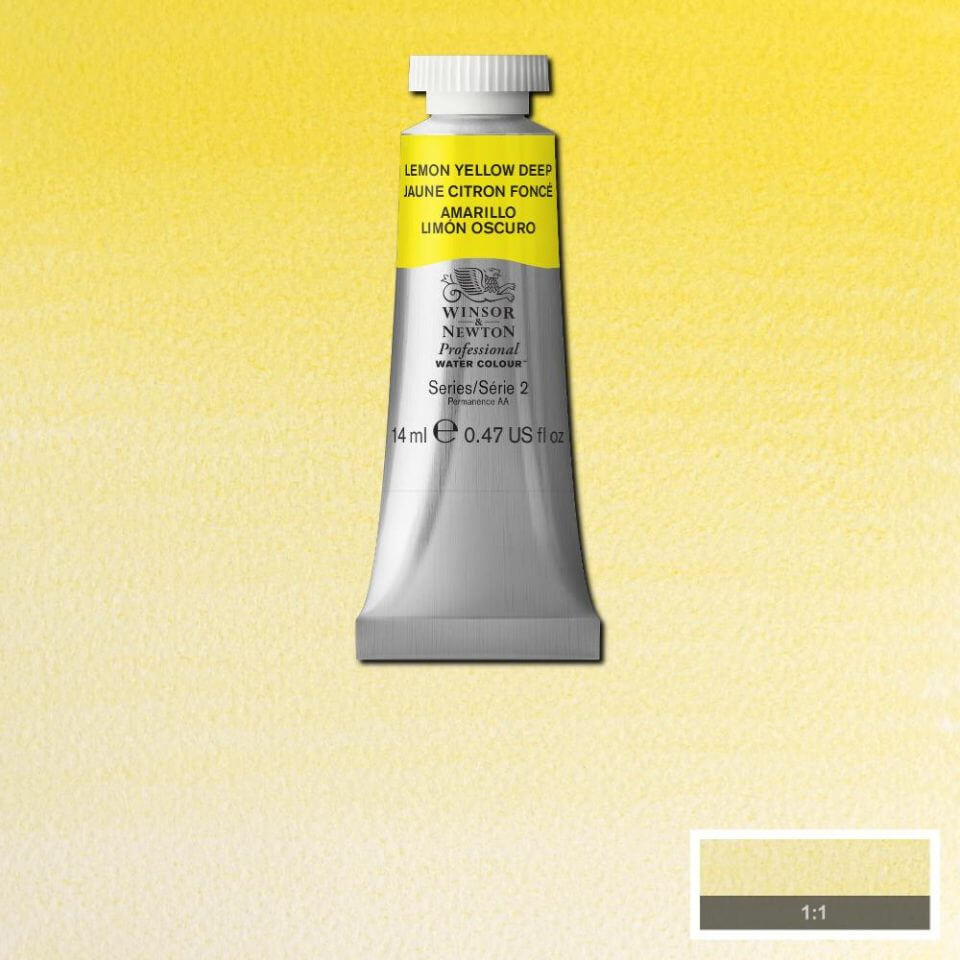
Lemon Yellow Deep is a warm yellow colour. It is an opaque and granulating watercolour.
| Color No.: 348 | Lightfastness: | Opacity:Semi-Opaque |
| Staining: | Granulation: | Sizes: 5ml tubes; 14ml tubes; Half Pans |
Permanent Lemon Yellow – Van Gogh
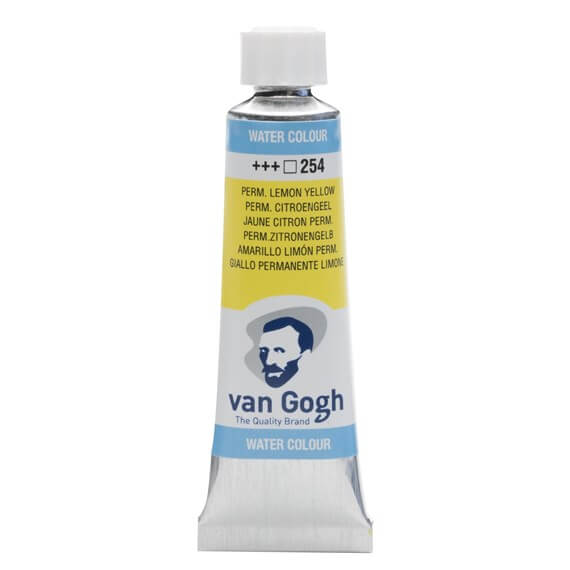
| Color No.: 254 | Lightfastness: | Opacity:Transparent |
| Staining: | Granulation: | Sizes: Tube 10 ml |
Permanent Lemon Yellow – Rembrandt
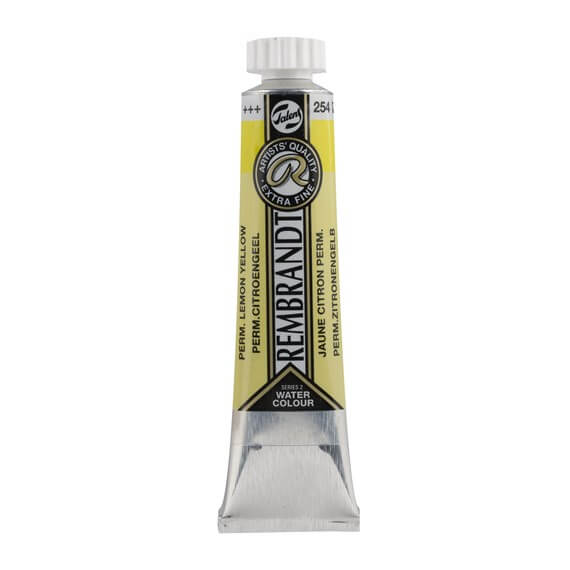
| Color No.: 254 | Lightfastness: | Opacity:Semi-transparent |
| Staining: | Granulation: | Sizes: Tube 10 ml |
Winsor Lemon – Winsor & Newton
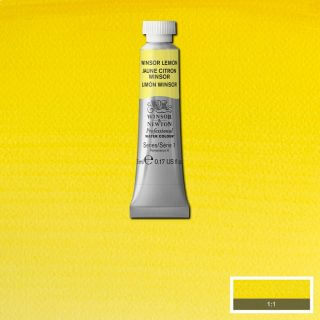
Winsor Lemon is a clear bright yellow colour with excellent tinting properties. It is a variation of the Hansa pigments which were discovered in the early 1900s in Germany.
| Color No.: 722 | Lightfastness: | Opacity:Semi-Transparent |
| Staining:Staining | Granulation: | Sizes: 5ml tubes; 14ml tubes; Half Pans |
Tips when choosing colors
When it comes to choosing colors for watercolor painting, there are a few tips to keep in mind. First, consider the color wheel and how different colors interact with each other. Understanding complementary colors, warm and cool tones, and color harmonies can help you create dynamic and visually appealing artworks. Additionally, think about the subject matter and the mood you want to convey. For example, if you are painting a landscape, you may want to choose greens and blues for a calming and natural feel. Lastly, experiment with different brands and pigments to find colors that suit your style and technique. Remember, the color choices you make can greatly impact the overall look and feel of your artwork, so take your time and choose wisely.
Also read, watercolor essentials to see which colors are essential
History of Cadmium Lemon
Cadmium Lemon is a bright, warm yellow watercolor pigment with a rich history. Invented in the early 19th century, cadmium pigments quickly became a favorite among artists for their brilliance and opacity. Cadmium Lemon was likely developed shortly after the introduction of Cadmium Yellow, and has been popular among watercolorists ever since. Despite concerns over the toxicity of cadmium, the pigment remains in use today and is highly valued for its lightfastness and color saturation.
How watercolor paint is made
Watercolor paint is typically made from a few simple ingredients:
- pigments
- binders
- water

The pigments used in watercolor paints can be organic or inorganic compounds, such as minerals or synthetic chemicals. These pigments are finely ground and then mixed with a binder, which helps the pigment particles adhere to the paper when the paint is applied.
The most common binder used in watercolor paints is gum arabic, a natural resin extracted from the sap of the acacia tree. Gum arabic is mixed with the pigment to create a thick paste, which is then combined with water to create the final paint.
Other additives may be added to the paint to improve its performance or create specific effects. For example, some watercolor paints may include wetting agents to help the paint spread more evenly on the paper, or preservatives to extend the paint’s shelf life.

Watercolor paints are available in a wide range of colors and textures, from transparent washes to opaque and granulated pigments. Different
manufacturers may use slightly different formulations or ingredients in their paints, which can affect the quality and performance of the paint.
If you’re interested in learning about other colors, check out our pages on , , and , which provide in-depth information on these colors and their various shades.
